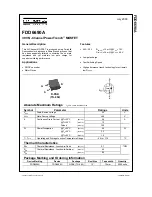
page 5 – 46
VP-8IP / Sep 2013
V P - 8
i P
P R O C E S S M O D E S
AM
equalizer that tilts the waveform in the direction opposite to how the transmitter will
tilt it later, and the result is flatter tops of the clipped waveforms, and therefore more
accurate modulation of the transmitter.
Note that the LF equalization generated by the tilt equalizer is NOT intended to boost
low frequency energy in program material to make it more audible to the ear. Rather, LF
Tilt Correction occurs in the subsonic audio region, typically between 10Hz and 50Hz.
Adjusting the Tilt Corrector
Adjusting the AM Tilt Corrector is a simple process. The first step is to determine if
the transmitter will require Tilt Correction in order to modulate well at low frequencies
and the following procedure will determine this:
1. Connect the
VP‑8
iP
to the audio input of the transmitter to be tested.
2. Connect the transmitter to either a dummy load of rated power or to the antenna
system.
3. Turn on the
VP‑8
iP
’s Test Oscillator. Adjust it to a frequency of 75Hz. Adjust the Test
Oscillator Level control and the Analog 1 or Analog 2 output (as appropriate) until
approximately 80% modulation is indicated on the station’s modulation monitor.
Ensure that the Tilt Correct L (level) controls are set at 0dB.
4. Turn on the
VP‑8
iP
Test Oscillator Tilt Test by clicking its check box. Using an
oscilloscope connected to a low level RF sample of the transmitter output observe
the resulting RF waveform. It should appear like waveform A or waveform B below,
or somewhere in between the two extremes, depending on the response flatness of
the transmitter’s low frequency performance.
















































